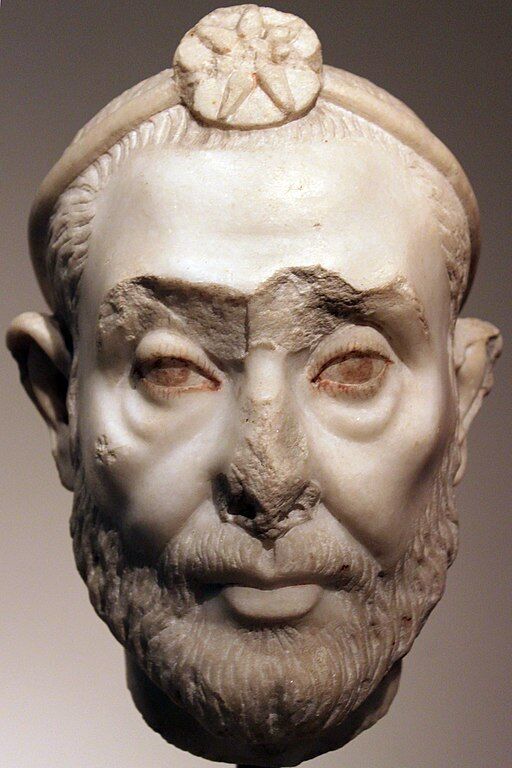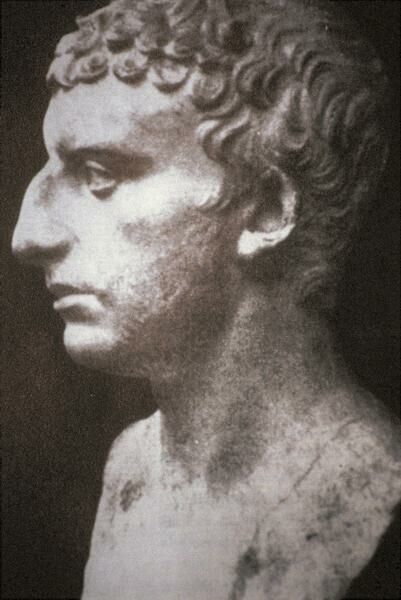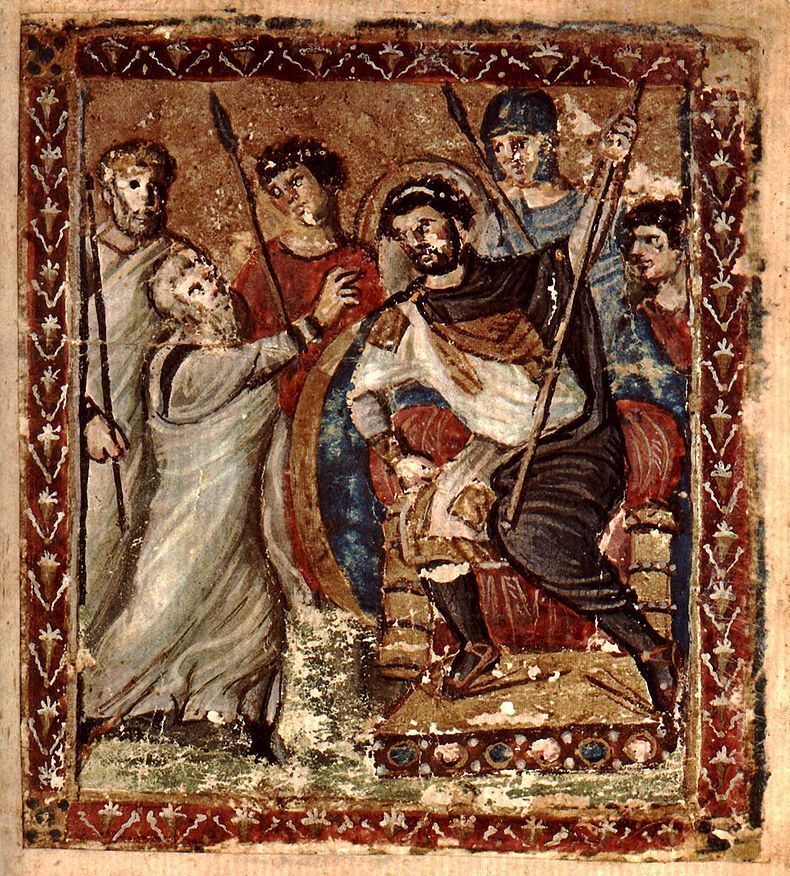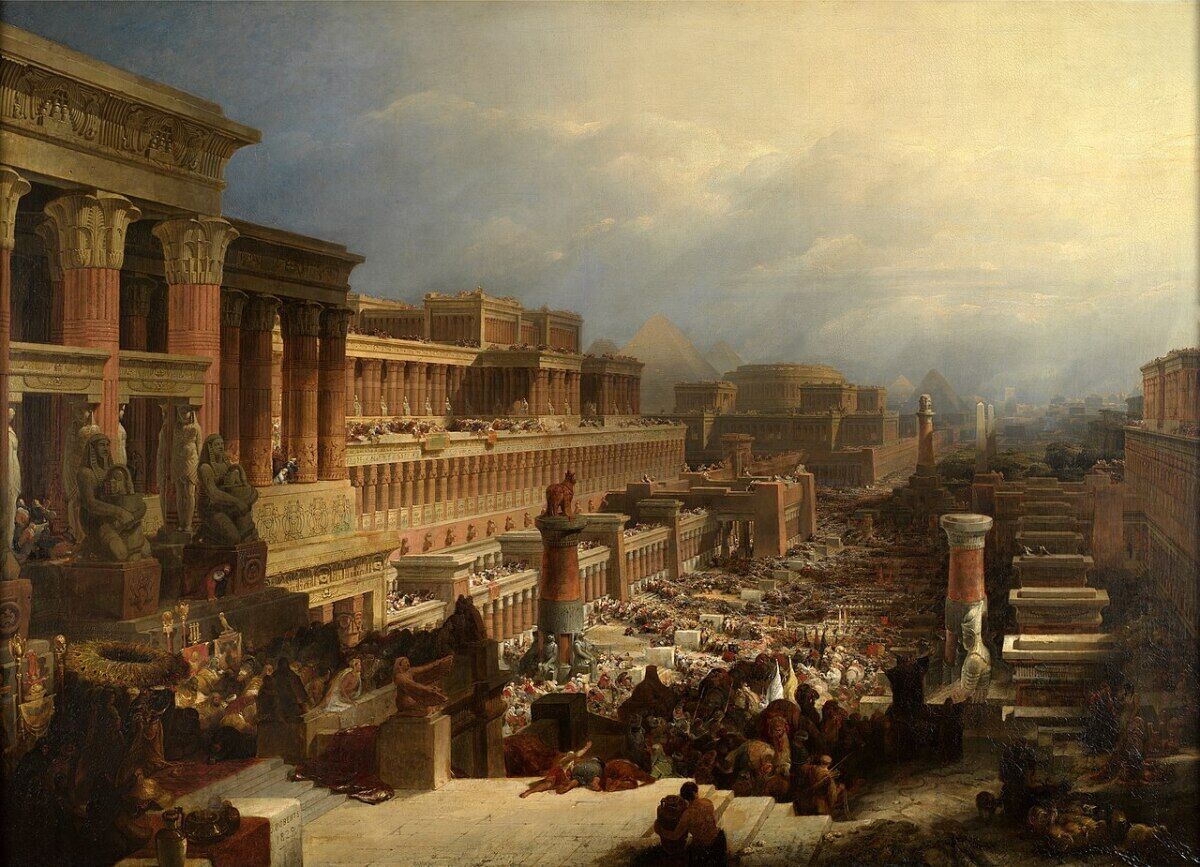11th Plague: Was Exodus-Period Egypt in the Middle of a Leprosy Epidemic?
The 10 plagues of Egypt have lived in infamy. Water to blood. Frogs. Lice. Flies. Death of livestock. Boils. Hail and fire. Locusts. Darkness. Death of firstborn.
But here’s an “11th plague” you may not have heard of: leprosy.
Early classical sources describing the Exodus repeatedly bring it up in the context of leprosy—to such a degree that one wonders if this was not merely some confused later memory of the 10 biblical plagues themselves, but instead evidence of another existing epidemic on the scene at the same time.
There is actually some biblical support for this—as well as an interesting new archaeological discovery, hot off the press.
Leprosy, Courtesy of Whom? The Blame Game
The Exodus account is, of course, most famously known from the Bible, and more specifically the Torah (the first five books of the Bible, written by Moses). But it is by no means limited to the Bible. Numerous foreign, non-Jewish authors of classical antiquity (a period spanning the eighth century b.c.e. to the fifth century c.e.) make reference to these events. Some authors speak at length on the subject—others, only in passing reference. Some of these texts are naturally propagandistic in nature, and some even overtly anti-Semitic (following what appears to have been a face-saving Egyptian narrative of events established much later on—especially promulgated by the third-century b.c.e. Egyptian priest Manetho). Still, what many of these texts do dramatically attest to—despite the various biases of the authors—is a core historicity to the Exodus events described as a whole.

And one particularly repetitive feature of such accounts of the Israelite departure from Egypt is leprosy.
“[The priest Amenophis] told [the pharaoh] that he might see the gods, if he would clear the whole country of the lepers and of the other impure people …” wrote Manetho in his propagandistic work Aegyptiaca (a work now largely lost to history, and preserved in its most complete form in Josephus’s Against Apion). Manetho continued:
[T]he king was pleased with this injunction, and got together all that had any defect in their bodies out of Egypt …. There were some of the learned priests that were polluted with the leprosy … [including] the priest, who ordained their polity and their laws … called Moses.
In the century following Manetho, his later counterpart, the Egyptian priest Lysimachus, wrote similar sentiments, describing the “people of the Jews being leprous and scabby.” Lysimachus also went so far as to rewrite the Red Sea incident as an intentional drowning, not of the pharaoh’s army, but of the “leprous people” themselves! Similar sentiments are repeated by another later Egyptian priest, the first-century b.c.e. Chaeremon.
The first-century c.e. Jewish historian Josephus, who quoted these several accounts at length, ridiculed these accusations of the Egyptian priests and their repeatedly conflicting accounts. “It now remains that I debate with Manetho about Moses … on account of his leprosy,” Josephus wrote.
“[T]hat he was not subject in his body to any such calamity, is evident from what he himself tells us; for he forbade those that had the leprosy either to continue in a city, or to inhabit in a village, but commanded that they should go about by themselves with their clothes rent; and declares that such as either touch them, or live under the same roof with them, should be esteemed unclean …. [They] are not permitted by him to officiate as priests …. How can it then be supposed that Moses should ordain such laws against himself, to his own reproach and damage who so ordained them?

After addressing several other of Manetho’s inconsistencies, Josephus concluded: “I think, therefore, I have made it sufficiently evident that Manetho, while he followed his ancient records … gave credit to some men who spake so out of their ill-will to us” (Against Apion, 1.31).
As for the claims of Chaeremon and Lysimachus? Josephus likewise concluded that they “contrived [their arguments] out of [their] virulent hatred of our nation.”
Yet the leprosy claim stubbornly reappears—whether ascribed to the Israelites, or the Egyptians, or both. The first-century b.c.e. Gallic historian, Gnaeus Pompeius Trogus, wrote somewhat more generally of this affliction being more widespread in Egypt, in his Historiae Philippicae: “The Egyptians, being troubled with scabies and leprosy and warned by an oracle, expelled him (Moyses), with those who had the disease, out of Egypt, that the distemper might not spread among a greater number.”
The earliest-known classical author to describe the Exodus in some detail, the fourth-century b.c.e. Greek historian Hecataeus of Abdera (in his own work Aegyptiaca), refreshingly wrote very favorably of the plight of the Israelites (speaking of Moses, for example, as a “very wise and valiant man”). He spoke more generally of a situation of great disease afflicting ancient Egypt. “In ancient times a great plague occurred in Egypt, and many ascribed the cause of it to the gods, who were offended with them,” he introduces his Exodus account. “Therefore the native inhabitants concluded that, unless all the foreigners were driven out, they would never be free from their miseries.” Hence, in order to free the native inhabitants of Egypt from their own miseries brought upon them by the gods, the Israelites needed to first depart.
Of course, such thirdhand accounts—in many cases conflicting, and penned at least 1,000 years after the events described—could be taken with a grain of salt. Except for one thing: To a certain degree, they parallel the biblical account.
Indeed, despite Josephus’s logical defense against the claim of the Egyptian priests that Moses was a leper—Why would he make laws against himself?—the Bible actually says that Moses had leprosy!
Albeit, exceedingly briefly.
Exodus-Period Leprosy in the Biblical Account
“And Moses answered and said: ‘But, behold, they will not believe me, nor hearken unto my voice …” (Exodus 4:1). Moses, before the burning bush, worried that the Egyptians (and Israelite slaves) would not believe the message he was being commissioned to deliver. Notice Exodus 4:6-8:
“And the Lord said furthermore unto him: ‘Put now thy hand into thy bosom.’ And he put his hand into his bosom [i.e. inside his coat]; and when he took it out, behold, his hand was leprous, as white as snow. And He said: ‘Put thy hand back into thy bosom.’—And he put his hand back into his bosom; and when he took it out of his bosom, behold, it was turned again as his other flesh.—And it shall come to pass if they will not believe thee, neither hearken to the voice of the first sign [the rod turning to a serpent], that they will believe the voice of the latter sign [the leprous hand].”

It is easy to read right over this passage, with a focus more on Aaron’s rod dramatically becoming a serpent. But it is interesting to consider this second miracle in the context of ancient Egypt at this specific time being on edge already because of an epidemic of leprosy. Against such a backdrop, this miracle would only be logical and represent a far greater shock tactic, besides emphasizing whose God was able to heal such infirmity.
After all, within the same Exodus account, this is revealed as one of God’s names (Exodus 15:26): “… If thou wilt diligently hearken to the voice of the Lord thy God … I will put none of the diseases upon thee, which I have put upon the Egyptians; for I am the Lord that healeth thee”—the name yhwh rfa.
At the same time, contrary to the above classical accounts, this passage clearly alludes to disease that had been “put upon the Egyptians”—not the other way around.
An indication of the spread of an already prevalent disease before the Exodus plagues began is even hinted at in the reason Moses gave the Pharaoh for the Israelites’ departure, right from the beginning. “Moses and Aaron came, and said unto the Pharaoh … ‘The God of the Hebrews hath met with us. Let us go, we pray thee, three days’ journey into the wilderness, and sacrifice unto the Lord our God; lest He fall upon us with pestilence …’” (Exodus 5:1, 3). Moses sought three-days’-distance separation into the wilderness to entreat God—lest “we” succumb to pestilence. Could this indicate, from the outset, the presence of a troubling disease that was already afflicting Egypt?
The biblical connections continue further. The book of Leviticus constitutes manifold detailed instructions for Israel’s priesthood. Chapters 13-14 contain instruction, at length, for dealing specifically with potential cases of leprosy (including quarantine and treatment). “[T]his is the law of leprosy” (Leviticus 14:57). In fact, it is almost exclusively within this Israel-in-Egypt, Exodus and sojourn time frame that the Hebrew terms for leprosy are mentioned in the Bible (39 out of 53 times). Numbers 5 likewise describes the Israelites putting out of their camp those afflicted with leprosy (verses 1-4). And Moses, in his final address to the nation, revisits this important issue in Deuteronomy 24: “Take heed in the plague of leprosy, that thou observe diligently, and do according to all that the priests the Levites shall teach you, as I commanded them, so ye shall observe to do” (verse 8).
Again, it can be easy to read right over such passages. Yet their specific purpose becomes much more vivid when applied to a more dynamic backdrop of widespread leprosy afflicting the Middle East at that time.
After all, this very thing—as of last week—is starting to be revealed by archaeology.
Beware the Lepers of Megiddo
Material evidence of leprosy in the ancient world is extremely difficult to identify from skeletal remains. It is more likely that a patient will die before the disease advances enough to imprint heavily on the bones.
Yet just last week, new evidence was revealed pointing to just that: Analysis of the skeletons of two Canaanite brothers, unearthed at Tel Megiddo, their bodies discovered to have been ravaged by disease—potentially the earliest-discovered evidence of leprosy.
The dating of their burial? Somewhere within 1550 and 1450 b.c.e.—the years or decades just prior to the biblical chronology for the Exodus.
A full “third of one brother’s skeleton, and half of the other brother’s, shows porosity, lesions and signs of previous inflammation in the membrane covering the bones—which together suggest they had systemic, sustained cases of an infectious disease like tuberculosis or leprosy,” reports Brown University, whose Ph.D. candidate Rachel Kalisher led the investigation. Work is ongoing to determine the exact nature of this disease. If the diagnosis of leprosy does prove accurate, this would represent “potentially one of the oldest examples of leprosy in the world.”
Such heavy imprinting of disease on the bones was apparently more recognizable because these were upper-class individuals of the city, and thus had more ready access to various treatments that prolonged their life (the skull of one individual even showing evidence of trephination—brain surgery). Still, their treatments, if anything, must have only prolonged their suffering—and skeletal analysis reveals that they died at a young age (one perhaps in his late teens or early 20s, and the other somewhere in his late 20s to early 40s).
It will be interesting to see the final conclusions regarding these skeletons. Nonetheless, from a preliminary perspective, the emergence of leprosy in Canaan at this time would be a dramatic fit, not only with the classical accounts, but also for the wider picture painted by the biblical account.
It also fits with Egyptian papyri from the mid-to-late second millennium b.c.e. “Archaeologists found a reference to leprosy in the ‘Ebers’ (written around 1550 b.c.) and ‘Brugsch’ Papyri (dated between 1350–1200 b.c.), under the term ‘Uchedu’, describing leprosy among the slaves coming from Sudan,” states the article “Mycobacterium Leprae: A Historical Study on the Origins of Leprosy and Its Social Stigma,” in the journal Le Infezioni in Medicina. This Ebers Papyrus reference would therefore be the earliest-known reference to the disease in Egypt—and again, right in the same chronological window as the Megiddo brothers, and just prior to the biblical Exodus account.

Finally, as to the repetitious “blaming” of the Jews for this pestilence by the classical Egyptian authors? Such a trope unfortunately comes as no surprise. It brings to mind, in more recent history, the “Black Death,” or bubonic plague, of the Middle Ages—a plague likewise famously blamed on the Jewish population, even as the Jewish population was proportionally unaffected by it thanks to their more strict, biblically based quarantine and health laws.
For as Moses warned of this “11th” affliction at the time of the Exodus, detailing treatment minutiae and quarantine practices for the Israelites: “Take heed in the plague of leprosy.”
